‘Goodnight Mommy’ Explained: An Analysis of the Austrian Horror Movie
Trying to break down Austria’s horror film Goodnight Mommy? This article will analyze everything from the plot to the cast, general themes, and more.
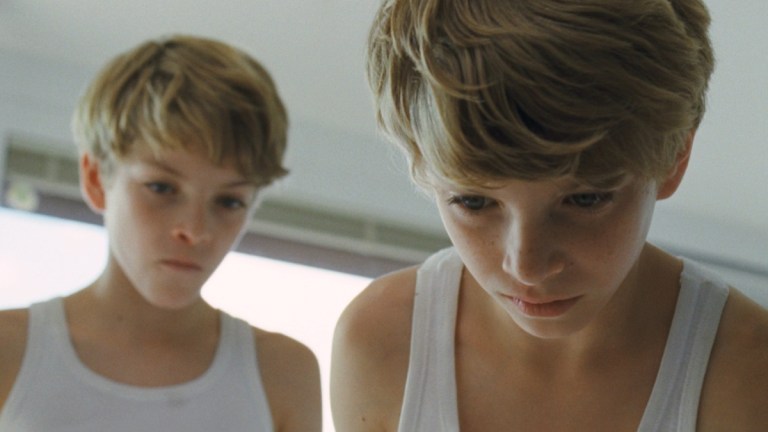
After a relatively quiet January 2015 premiere in its home country of Austria, the horror movie Goodnight Mommy (2015) terrified American theatergoers in September 2015 and has since earned a well-deserved reputation as a disturbing arthouse horror film. Making their debut as writer/directors, Veronika Franz and Severin Fiala follow the lead of other great Austrian directors such as Michael Haneke (no doubt there’s a Funny Games (1997) twist in the film’s brutal, sadistic last part) and Ulrich Seidl (The Paradise Trilogy, 2012), who produced Goodnight Mommy and is Franz’s husband and Fiala’s uncle.

Its international title that sounds like a creepy lullaby is far from the original German one, Ich Seh, Ich Seh (I See, I See), referring to twin protagonists’ dual point of view and pointing out how misleading one’s perception can be. You can tell that if there’s that much symbolism in the title, we have a lot to unpack in this analysis! From the twisted mother role to the use of masks and silence throughout the movie, we’ll see how Goodnight Mommy manages to build up such a gripping tension.
Plot Summary
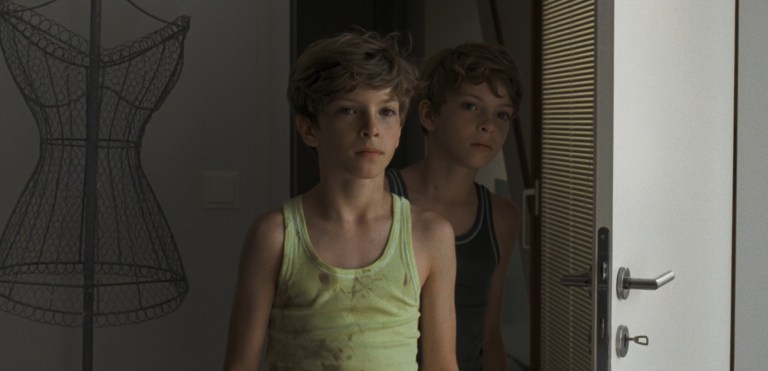
Elias and Lukas (played by the eponymous Elias and Lukas Schwarz), two nine-year-old twins, are taken aback when their mother (Susanne Wuest) comes home after undergoing extensive plastic surgery, leaving her whole face wrapped in bandages with only her eyes and mouth visible. In addition to that strange appearance, the mother (who is never named) starts exhibiting unnerving behavior. She keeps the blinds lowered, forbids the twins from making any noise at all in the house, purposely ignores Lukas — going as far as refusing to serve him food — and even hits Elias when he fails to follow her rules. The boys escape the isolated house’s unsettling atmosphere by playing in the surrounding Austrian countryside. You can tell something is not quite right with those two: They play hide-and-seek, jump on the trampoline, or sneak a cat into their bedroom like any other kid, but they also collect humongous cockroaches they keep in a jar, create weird-looking masks…and also, it’s a cat’s corpse, not a live kitten. In their indivisibility and creepy quietness, they remind us of the twin girls in The Shining (1980). Meanwhile, the mother is still cold and distant, and the boys grow more and more suspicious: For them, it has become obvious that’s not their mother under the gauze.
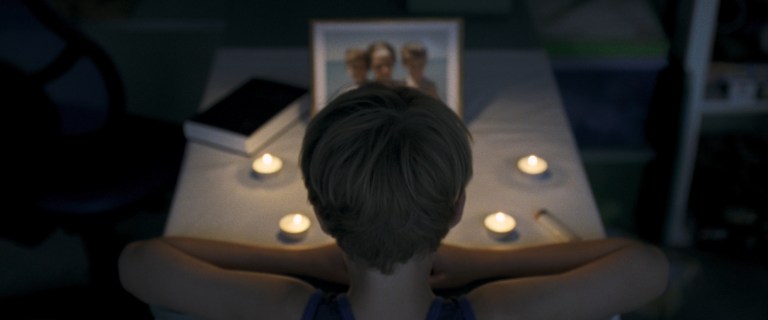
The discovery of a picture of their mother next to a woman who is her lookalike is the proof they need to confirm their suspicion. After they tried to run and warn the local priest, who drives them right back to the house, they decide to take matters into their own hands. When the woman wakes up, she’s tied to the bed and has to endure numerous abuses from the two boys, who demand to know where their real mother is. The torture grows more and more violent, until Lukas and Elias threaten to burn the house down. Their captive explains that she is indeed their mother but that Elias is not in his right mind since the death of his brother Lukas. She has not been ignoring one of her children: Lukas was the product of a coping mechanism, and only Elias can see him. Dissatisfied with this answer, Elias carries out his threats and sets the house ablaze. The woman is engulfed in flames and burns to death.
Cast

Elias and Lukas Schwarz play the twins Elias and Lukas. They were selected from more than 240 pairs of identical twins for their innocent yet potentially sinister look. To make it more immersive, the movie was shot in chronological order, and the twins discovered what was happening in their scenes on the day they were shot.
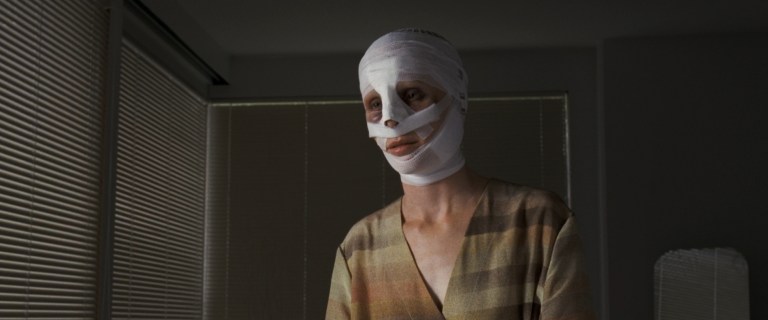
Susanne Wuest, an Austrian actress born in 1979 in Vienna, plays the mother. She first gained international recognition for her leading role in Antares (2004) by Götz Spielmann. The German cultural platform Filmdienst compares her to a “younger sister of Tilda Swinton.” She has worked with critically acclaimed directors over the years such as Olivier Assayas and Gore Verbinski.
Review
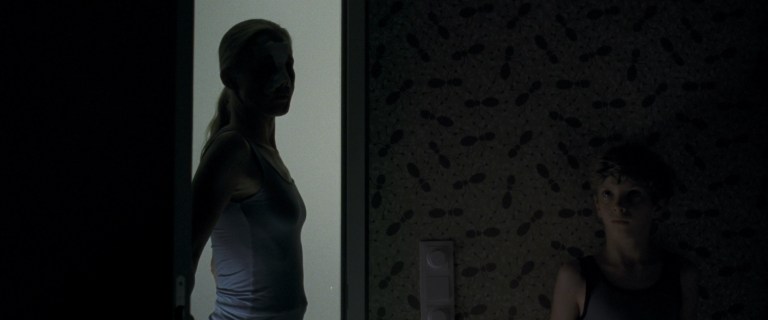
Entirely shot on 35-millimeter film and enhanced by Martin Gschlacht’s beautiful cinematography, Goodnight Mommy is as much as an art film as it is a horror movie. And that’s probably why we cannot bring ourselves to stop watching, even when it becomes unbearably brutal on screen. The tension buildup is worthy of the greatest thriller, and nothing can prepare you for the dark turn of events the movie takes in its last part. The three characters are brilliantly played, and the whole script seems to be half-hidden in the shadows, each frame raising more questions than it answers. For the viewers who like to have all the solutions at the end of the film, maybe that’s the only downside: You have to accept that this puzzle comes with missing pieces.
Analysis
With its riveting tension and final burst of violence, no doubt Goodnight Mommy is an effective, unnerving horror movie that will haunt you for a long time. What are the key ingredients that make this flick so compelling? Here are three major themes explored throughout the film.
Sound of Silence

In a movie where a house in the middle of nowhere plays such a pivotal role, we could have expected a dark, collapsing old manor with mold in the corner and moth-eaten curtains. Instead, Goodnight Mommy takes place in an elegant, contemporary house, with immaculate concrete walls and large windows. That doesn’t make it more reassuring: while the outside could be on Architectural Digest’s cover, the inside is still chilling to the bone. Part of the creepiness is due to the decoration, or rather the lack of it: bare white walls, minimalist furniture…but the blood-curdling feeling is mostly due to the mother, who insists on keeping the blinds lowered and does not tolerate a sound. The twins are thus banned from playing inside and spend their time in the surrounding fields while their mother lurks in silence and semi-darkness.
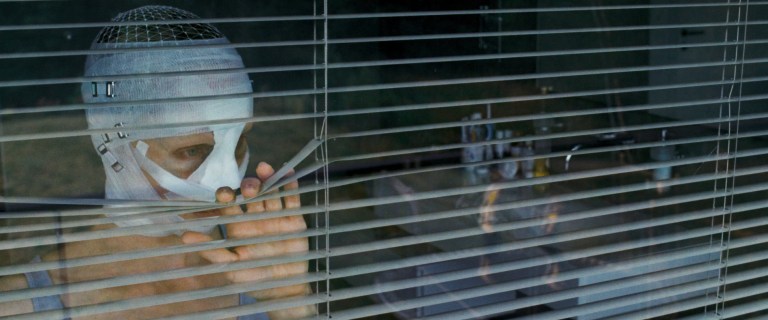
That’s the core element to the raw tension we feel throughout the movie: silence. The twins are not allowed to make a noise in the house, but they’re not really talkative when they’re playing outside, either. Instead, they seem to be communicating telepathically, understanding each other’s thoughts without having to say a word — which is not very surprising once you know Lukas exists only in the mind of Elias. The mother speaks very little, as if having a conversation with her offspring was too demanding. We overhear a muffled phone call, where we learn she’s a TV personality, but that’s about it. All in all, the dialogue could almost fit on a postcard.

Silence has always been a big component of horror movies. (The success of 2018’s A Quiet Place is perfectly illustrative of that.) Silence settles before a jump scare, transforms any creaking sound in a menacing footstep…it’s always a sign of a close danger. In Goodnight Mommy, it’s everywhere: noiseless home, mute characters…and it’s not just an effective trick to put us on edge. The movie clearly shows how when you don’t deal with emotional traumas and bury them in silence, it can eat you alive and lead to tragedy. The obviously absent father is never mentioned: Is he dead? Has he left? We’ll never know. The death of Lukas is also never brought up, despite the fact the mother clearly sees her son struggling with the loss of his brother and talking about him as if he was still there. The accident seems to be quite recent, and a logical choice would have been to find a good family therapist. Instead, she went and got herself a facial surgery, wrapping herself up in bandages and silence.
Masks and identity
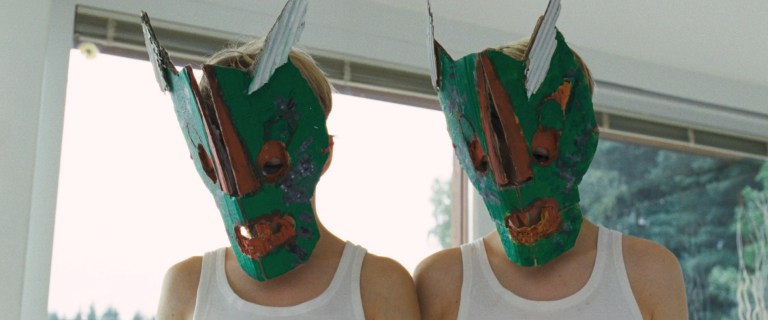
In a 2015 interview for Vice, Severin Fiala said that the movie is mainly “about the question of identity and what makes you the person you appear to be.” Well-known props in horror movies, masks are used to conceal one’s identity and give a more sinister look to the villain. In Goodnight Mommy, the mask was not purposely chosen by the mother, but still is as creepy as Michael Myers’s in Halloween (1978). But beyond her terrifying appearance, what mostly creates mistrust with her kid is not her looks but her behavior. Her erratic actions, mood swings, and sudden bursts of anger alienate her children and the viewer as well. We convince ourselves, just like Lukas and Elias, that she is not their mom because she does not act like a mom. Her identity is stripped away, first by that creepy post-surgical mask, then by her attitude. A similar process was at stake in Shyamalan’s The Visit (2015), where the two children don’t question their grandparents’ identities as long as they act like grandparents.
The ambiguity of the mother figure

In horror-movie territory, mothers often play an ambiguous role. On the one hand, they’re obviously supposed to represent security and salvation. They are generally the one to notice that something is amiss, while their young child is carelessly playing with an ancient demon and their husband finds a logical explanation to satanic scriptures appearing on the walls at 4 AM sharp every night. But their sensibility to the supernatural has double-edged consequences: They can lose their temper (I mean, who wouldn’t?) and be labeled as demented until the strange occurrences in the house cannot be ignored. At that point, they’re reinstituted and their husband stops saying they’re just tired. But not every movie goes for that happy ending…
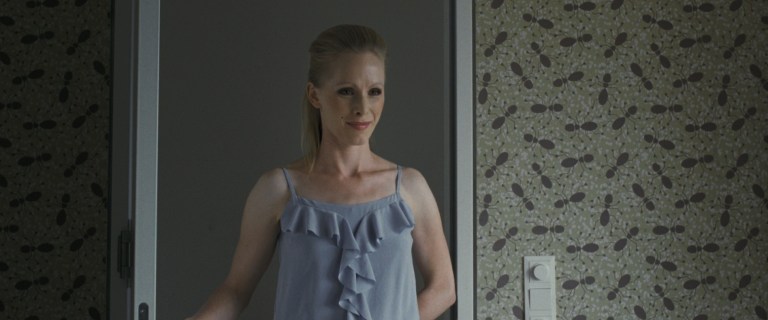
Giving a dark twist to that protective and nurturing mother figure is…well, terrifying on a whole new level — a deep-rooted fear that speaks to our inner child. In that sense, Goodnight Mommy has a lot in common with The Babadook (2014), where Amelia, a young widow, tries to protect her six-year-old son from a terrifying bogeyman. But as the evil presence grows stronger, Amelia lets herself become erratic, paranoiac, and will ultimately be the instrument the Babadook will use to try to get to her son.

This twisted mother figure is not the only thing Goodnight Mommy and The Babadook have in common: Both movies were directed by a woman (respectively Veronika Franz, in collaboration with Severin Fiala, and Jennifer Kent). Both directors give the audience a gripping and nuanced perspective of a far-from-perfect motherhood, showing two women dealing (quite badly) with mental-health problems, grief, and a child they can no longer understand.
Ending Explained

A pinnacle of gore and violence, the final scene leaves us watching between splayed fingers while the mother screams and burns alive. We’ve just learned that Lukas is in fact dead, and Elias has been imagining him all along. It explains a lot: how Elias was always talking for his brother (“Lukas said…”), how the mother refused to have a plate set for Lukas, or how she would become aggressive when Elias insisted on his brother’s wishes.

The movie ends with the firefighters extinguishing the fire but arriving too late to save the mother. Meanwhile, Elias and Lukas walk across a cornfield to be reunited with their mother, unarmed and serene. She embraces the twins, and the three of them look at the camera with smiles on their faces. Finally, this perfect family portrait dissolves into ashes. It’s clear this frame is an ironic representation of how it would have turned out without the accident that took Lukas’s life. Elias’s whereabouts after the fire remain a mystery.
The Soundtrack
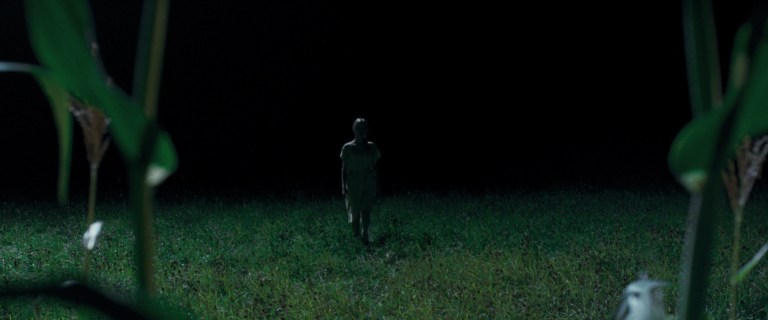
In Goodnight Mommy, the soundtrack is solely there to underline the crippling silence. The soundtrack by Olga Neuwirth is like a whispered nightmare, with strange harmonies and distressing notes of glass harmonica and musical saw. There are some music quotes here and there, like Brahms’s “Cradle Song” in the opening scene, or this German haunting lullaby the mother sings (Weißt du, wie viel Sternlein stehen, meaning “Do you know how many stars there are?”).
Frequently Asked Questions
What are some other movies like Goodnight Mommy?
- The Babadook (2014), for its portrayal of a mother at loss, inadvertently letting evil in.
- Funny Games (1994) by Michael Haneke is a German horror film similar to Goodnight Mommy because of the hostage situation and escalating violence.
- The Bad Seed (1956), a classic psychological horror-thriller about a murderous little girl. Eleven-year-old Patty McCormack was nominated for a Golden Globe and an Academy Award for this role.
- A Tale of Two Sisters (2003), a critically acclaimed South Korean horror drama where two sisters must face their menacing stepmother and a family house that appears to be haunted.
Where was the movie filmed?

When was Goodnight Mommy made?
Is Goodnight Mommy gory?
Is Goodnight Mommy based on a true story?
What happened to the mother in Goodnight Mommy?
What happened to the brother in Goodnight Mommy?
As for Elias, his fate is uncertain. After the fire he starts gets out of control, we see Elias (and Lukas) back away while inside the house. The next time we see them is as they are walking through the cornfield for their family reunion. We see the burning house from the outside, but it’s clear some time has passed since the firefighters are calm and appear to be containing the fire rather than trying to get anyone out. An ambulance is present at the scene, but we can’t see if anyone is in it. Did Elias die? The directors left his fate deliberately ambiguous, so it’s up to the viewer to decide.
How old are the boys in Goodnight Mommy?
What happened to the cat in Goodnight Mommy?
Is the mother in Goodnight Mommy The real mother?
What do people say about the film on Rotten Tomatoes?
- “Ripped straight from the pages of your therapist’s notebook, Goodnight Mommy is a thoroughly terrifying fairy tale with a killer twist.” — Julie Crawford for North Shore News
- “The experience is slow, but every dose of discomfort will seep into your skin.” — Nguyen Le for The Script Lab
- “A masterful example of genre filmmaking’s ability to transcend its limitations, leaving a viewer not just frightened, but also changed.” — Michael O’Sullivan for the Washington Post